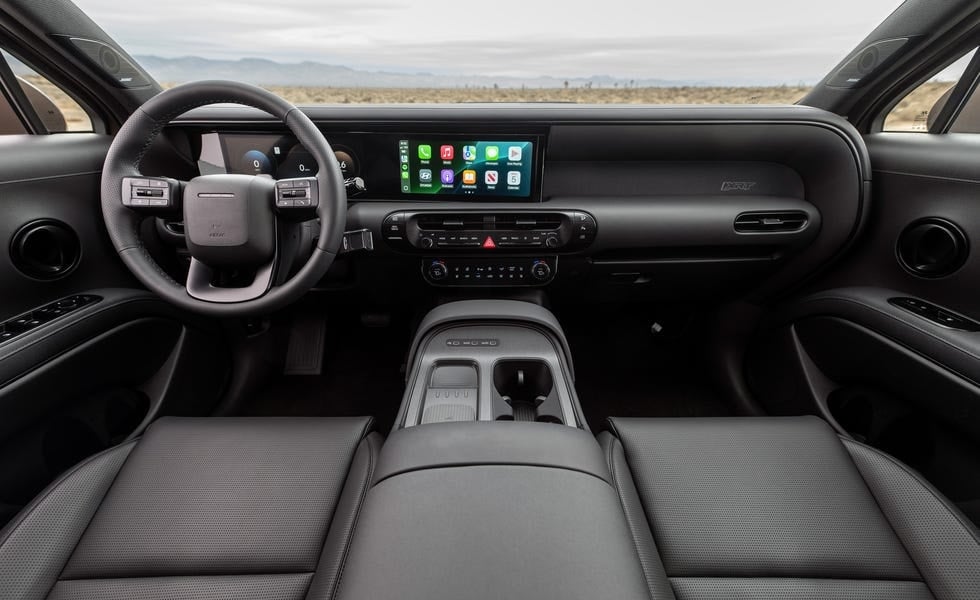Car and Driver testing shows that the second-generation (2026) Hyundai Palisade XRT Pro AWD is significantly slower to accelerate than the 2023 model: 0–60 mph takes 8.1 seconds (about 0–97 km/h), a 1.7-second drop. The main reasons are a less powerful 3.5-liter V-6 engine than before and an additional 369 lb of curb weight.

Acceleration lags: the numbers speak for themselves
On Car and Driver's test track, the 2026 Palisade XRT Pro AWD hit 60 mph in 8.1 seconds, compared to 6.4 seconds for the 2023 Palisade AWD. The 5–60 mph test (excluding standing starts) also took the 2026 Palisade 8.4 seconds, 1.6 seconds slower than the 2023. In the high-gear overtaking tests, the 2026 model took 4.0 seconds (30–50 mph) and 5.8 seconds (50–70 mph), compared to 3.2 seconds and 4.3 seconds for the previous model.
The 2026 Palisade completed the quarter mile in 16.1 seconds at 89 mph, 1.3 seconds slower and 6 mph behind the 2023 Palisade (14.8 seconds at 95 mph). From a standstill, the 2026 took 10.4 seconds to reach 70 mph; the 2023 reached 80 mph in the same time. The 2026's electronically limited top speed is 129 mph, slightly lower than the 2023's 131 mph.
Why is the 2026 Palisade 1.7 seconds slower?
The two biggest variables are reduced power/torque and increased mass:
- Engine: The 2026 Palisade uses a 3.5-liter V-6 (Atkinson) with 287 hp at 6,400 rpm and 260 lb-ft at 5,000 rpm; the 2023 model uses a 3.8-liter V-6 with 291 hp at 6,000 rpm and 262 lb-ft at 5,200 rpm.
- Weight: The 2026 Palisade XRT Pro weighs 4,792 lb, 369 lb more than the 2023 Palisade XRT (4,423 lb).
Car and Driver also notes that the 2026 Palisade’s powertrain no longer allows for “brake-torquing,” which reduces overtaking. The difference starts at 30 mph (an additional 0.6 seconds) and widens at 40 mph (an additional 0.9 seconds) compared to the 2023 model.
Technical adjustments and operating feel
The new generation is slightly larger (200.4 in length; 116.9 in wheelbase) and focuses on a smooth, solid ride. The cabin is well finished and well equipped, and the ride is smooth. However, the sluggishness under acceleration is what most test drivers complained about after experiencing it.
Larger brakes (13.6-inch front discs; 12.8-inch rear) are shod with Continental CrossContact ATR 255/60R-18 108H M+S tires, but the 2026's 70–0 mph stopping distance is 181 ft, down from the 2023's 161 ft. 300-ft cornering grip is 0.76 g, down from the previous model's 0.84 g. Cabin noise has improved, though: 67 dBA at 70 mph and 35 dBA idling (69 dBA and 43 dBA, respectively, on the 2023).

Hybrid 329 hp: the way out for the performance problem
The 2026 Palisade lineup adds a 329-hp hybrid. According to Car and Driver, this configuration brings the 0–60 mph time down to 6.6 seconds, closer to the 2023's capabilities, while also promising significantly better fuel economy. It's worth considering if acceleration and fuel economy are priorities.
Interior and finish: upgrades come at the price of… weight
The 2026 generation is highly appreciated for its exterior style, luxurious and fully equipped interior, as well as smooth and solid driving quality. However, the additional amenities and slightly more space contribute to increased weight, leading to a decrease in acceleration performance.

Price and test configuration
The 2026 Palisade XRT Pro AWD starts at $51,470; the test vehicle started at $51,715 (floor mats are an option for $245). For reference, the 2023 Palisade AWD starts at $38,785; the Car and Driver test vehicle started at $44,300, including the $5,300 XRT package and $215 floor mats.
Specifications and test results
| Category | 2026 Palisade XRT Pro AWD | 2023 Palisade AWD |
|---|---|---|
| Engine | 3.5-liter V-6 Atkinson cycle, DOHC 24v, direct injection | 3.8-liter V-6 Atkinson cycle, DOHC 24v, direct injection |
| Power/torque | 287 hp @ 6,400 rpm; 260 lb-ft @ 5,000 rpm | 291 hp @ 6,000 rpm; 262 lb-ft @ 5,200 rpm |
| Transmission/drive | 8-speed automatic; AWD | 8-speed automatic; AWD |
| Mass | 4,792 lbs | 4,423 lbs |
| Dimensions (LxWxH) | 200.4 x 78.0 x 69.5 in; WB 116.9 in | 196.7 x 77.8 x 68.9 in; WB 114.2 in |
| Tires | Continental CrossContact ATR 255/60R-18 108H M+S | Hankook Ventus S1 noble2 245/50R-20 102V M+S |
| Brakes (front/rear) | 13.6 in heatsink / 12.8 in disc | 13.4 in heatsink / 12.0 in disk |
| 0–60 mph | 8.1 seconds | 6.4 seconds |
| 5–60 mph (rolling) | 8.4 seconds | 6.8 seconds |
| 30–50 / 50–70 mph | 4.0 seconds / 5.8 seconds | 3.2 seconds / 4.3 seconds |
| 1/4 mile | 16.1 seconds @ 89 mph | 14.8 seconds @ 95 mph |
| Maximum speed (limited) | 129 mph | 131 mph |
| Braking 70–0 mph | 181 feet | 161 feet |
| 300 ft Skidpad | 0.76 g | 0.84 g |
| Cabin noise | Idle 35 dBA/2 sones; Full 73 dBA; 70 mph 67 dBA/22 sones | Idle 43 dBA; Full 74 dBA; 70 mph 69 dBA |
| EPA (mpg) | 19/16/22 (combined/urban/highway) | 21/19/25 (combined/urban/highway) |
Conclude
The 2026 Hyundai Palisade improves on design, space, and ride comfort, but at the expense of performance: acceleration, braking distance, and grip all fall short of the 2023 in Car and Driver's measurements. If performance is your priority, the 329-hp hybrid is a good balance; but for those who prioritize quietness, comfort, and a solid feel, the 2026 Palisade continues to deliver.
Source: https://baonghean.vn/hyundai-palisade-2026-xrt-pro-v-6-cham-hon-doi-cu-10311100.html


![[Photo] Prime Minister Pham Minh Chinh receives Lao Minister of Labor and Welfare Phosay Sayasone](https://vphoto.vietnam.vn/thumb/1200x675/vietnam/resource/IMAGE/2025/11/11/1762872028311_dsc-2246-jpg.webp)


![[Photo] Chu Noodles - the essence of rice and sunshine](https://vphoto.vietnam.vn/thumb/1200x675/vietnam/resource/IMAGE/2025/11/11/1762846220477_ndo_tl_7-jpg.webp)





















































































![Dong Nai OCOP transition: [Article 3] Linking tourism with OCOP product consumption](https://vphoto.vietnam.vn/thumb/402x226/vietnam/resource/IMAGE/2025/11/10/1762739199309_1324-2740-7_n-162543_981.jpeg)








Comment (0)